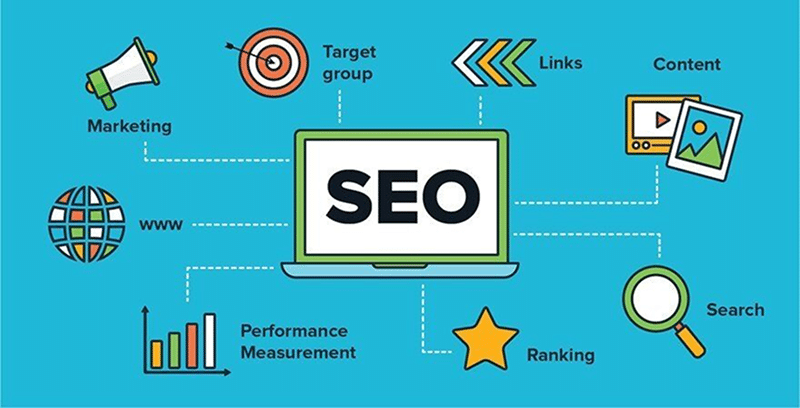Introduction
As a web developer, you have a crucial role in ensuring that the websites you build are optimized for search engines. While content is essential for SEO, technical aspects such as mobile optimization, page speed, and site structure are just as important for ranking well on search engines like Google. In this blog post, we'll go over essential tips for building SEO-friendly websites that help improve search engine visibility and deliver an excellent user experience.
1. Optimize for Mobile: Mobile-First Indexing
With more users browsing the web from mobile devices than desktops, Google and other search engines prioritize mobile-friendly websites. This is known as mobile-first indexing, meaning Google’s algorithms primarily use the mobile version of a site for ranking and indexing.
Tips for Mobile Optimization:
Responsive Design:
Ensure your website design adapts seamlessly to various screen sizes. A responsive design allows content to adjust according to the device, which helps with mobile user experience.
Viewport Meta Tag:
Use the correct meta viewport tag to control the layout on mobile browsers. It ensures that content scales correctly across different devices.
Touch-Friendly Navigation:
Avoid small buttons or links that are difficult to tap. Larger buttons and spacing improve user experience and reduce bounce rates.
Test Mobile Performance:
Regularly test your site on multiple mobile devices and use tools like Google’s Mobile-Friendly Test to ensure it's performing well.
2. Speed Matters: Ensure Fast Page Load Times
Page speed is a critical ranking factor for Google. If a page takes too long to load, visitors will likely leave before the page even finishes rendering, leading to high bounce rates. Slow pages also have a negative impact on SEO rankings.
Tips for Optimizing Page Speed:
Minimize HTTP Requests:
Reduce the number of elements (images, scripts, CSS files) on each page to lower HTTP requests. This helps speed up page loading.
Image Optimization:
Compress images and serve them in modern formats like WebP, which provide better compression without sacrificing quality.
Use Caching:
Leverage browser caching to store static resources in users' browsers, so they don't have to be re-downloaded each time the user visits your site.
Content Delivery Network (CDN):
Use a CDN to distribute content across multiple servers globally. This helps load the site faster by serving resources from a location closer to the user.
3. Improve Site Structure: Clean URLs and Internal Linking
A clean, organized website structure makes it easier for both search engines and users to navigate your site. This enhances the chances of content being indexed properly and helps users find relevant information quickly.
Tips for Structuring Your Site:
SEO-Friendly URLs:
Create short, descriptive URLs that include relevant keywords. Avoid using long, complex URLs with unnecessary characters. For example, use www.example.com/seo-tips instead of www.example.com/article123?=7.
Internal Linking:
Make sure your site has a logical internal linking structure. Linking related pages together helps search engines understand your site's content hierarchy and improves the crawlability of your pages.
XML Sitemap:
Include an XML sitemap that lists all your important pages and submit it to search engines. This helps search engines find and index your content faster.
4. Semantic HTML and Structured Data
Search engines use HTML elements and structured data (such as schema markup) to understand the content and context of your web pages. Properly utilizing these elements can improve the visibility of your site in search results.
Tips for Using Semantic HTML and Structured Data:
Semantic HTML Tags:
Use the correct HTML tags like
Schema Markup:
Implement schema.org structured data to provide search engines with specific information about your content, like articles, products, events, reviews, and more. Structured data can improve how your pages appear in search results with rich snippets.
5. Optimize Content: High-Quality, Keyword-Rich Content
While technical SEO is crucial, content optimization remains one of the most important factors in ranking well. Search engines want to deliver the best, most relevant results to users, so providing valuable content is key.
Tips for Optimizing Content:
Keyword Research:
Use keyword research tools to find relevant keywords for your target audience. Integrate these keywords naturally into your content, titles, headers, and meta descriptions.
Engaging Content:
Create content that solves users' problems or answers their questions. Focus on providing in-depth, high-quality content that keeps visitors engaged.
Use Heading Tags Properly:
Organize your content with proper heading tags (
, , ) to make it scannable and easy for both users and search engines to understand the structure of your page.
) to make it scannable and easy for both users and search engines to understand the structure of your page.
6. Focus on Secure and Accessible Websites
Google values secure, accessible websites, and these factors can impact your site's rankings. Ensuring your website is secure and accessible to all users improves both user experience and SEO.
Tips for Website Security and Accessibility:
SSL Certificate:
Make sure your site uses HTTPS by installing an SSL certificate. Google considers HTTPS a ranking factor, and it ensures data security for users.
WCAG Accessibility:
Follow the Web Content Accessibility Guidelines (WCAG) to make your site accessible to people with disabilities. This not only improves your site's usability but also helps with SEO as Google values accessibility.
Conclusion
Building an SEO-friendly website is an ongoing process that requires attention to detail in both the front-end and back-end development. By focusing on mobile optimization, page speed, structured data, proper content, and accessibility, you ensure your website not only ranks well but also provides a great user experience. Keep in mind that SEO is an evolving field, so always stay up-to-date with the latest best practices to maintain a strong online presence.
By following these technical SEO tips and incorporating them into your web development process, you can help your websites rank higher in search engine results, attract more visitors, and deliver an exceptional experience for users across all devices.

